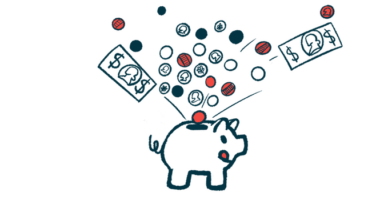EMA Reviewing Belantamab Mafodotin for Heavily Pretreated Multiple Myeloma

The European Medicines Agency has agreed to review the application of GlaxoSmithKline‘s belantamab mafodotin for the treatment of heavily treated multiple myeloma patients, the company announced in a press release.
Specifically, the marketing authorization application is for people with relapsed or refractory disease who received prior treatment with an immunomodulatory agent, a proteasome inhibitor, and a CD38-targeting antibody.
EMA’s advisory committee, the Committee for Medicinal Products for Human Use (CHMP), accepted the application for accelerated assessment, meaning it has deemed the treatment of major interest for public health. Products on accelerated assessment see their review time reduced from 210 to 150 days.
The U.S. Food and Drug Administration accepted a similar application in January, and has granted it priority review status, with a final decision expected within six months.
Belantamab mafodotin is an investigational therapy that falls into the category of antibody-drug conjugates. It consists of an antibody targeting a myeloma protein — the B-cell maturation antigen (BCMA) protein — bound to the toxic molecule auristatin F. Once belantamab binds to BCMA, the cancer-killing molecule is released into the cell and causes cell death.
The applications to the FDA and EMA were both based on data from the open-label DREAMM-2 Phase 2 clinical trial (NCT03525678), which is assessing belantamab mafodotin as a fourth-line or later therapy.
The trial included 196 patients who were assigned randomly to receive 2.5 mg/kg or 3.4 mg/kg belantamab, given once every three weeks. Participants in DREAMM-2 had received a median of seven prior lines of therapy, with some having been treated up to 21 times.
The proportion of patients responding to treatment was DREAMM-2’s main goal, but researchers also examined duration of response, time to disease progression or death, and overall survival as secondary measures.
Results published in December showed that 31% of patients on the 2.5 mg/kg dose, and 34% of those on the 3.4 mg/kg dose, had achieved an overall clinical response. Of those, 19% and 20% were very good partial responses or better.
For patients in the lowest dose, the median time to disease progression or death was 2.9 months, a figure that rose to 4.9 months for those on the highest dose. However, more patients on the highest dose had to reduce their treatment dose during the trial, and more of these patients died due to a serious adverse event (7% versus 3% for the lowest dose).
Based on these results, GlaxoSmithKline announced it would request the approval of the 2.5 mg/kg dose.
Belantamab has been designated a breakthrough therapy by the FDA and given priority medicines (PRIME) status by the EMA. If approved, it will become the first available anti-BCMA treatment.






